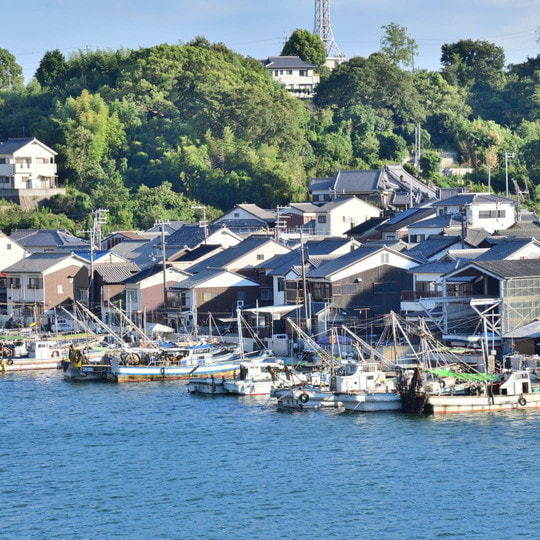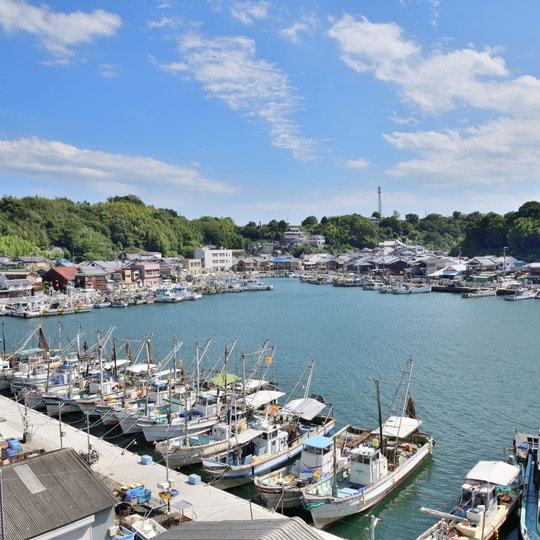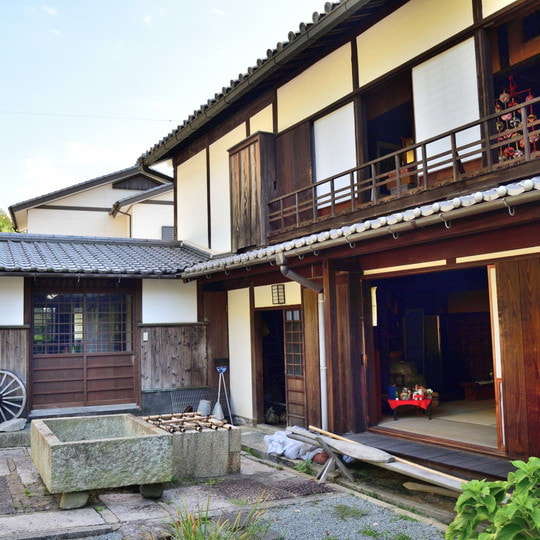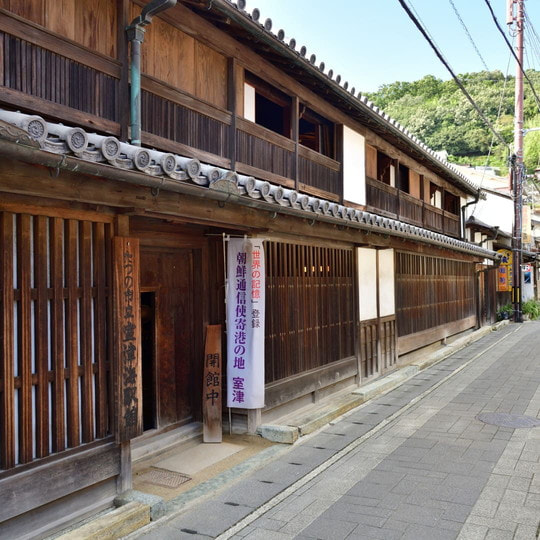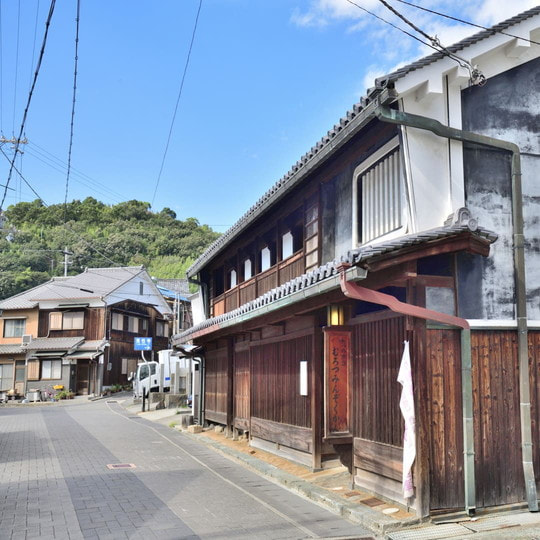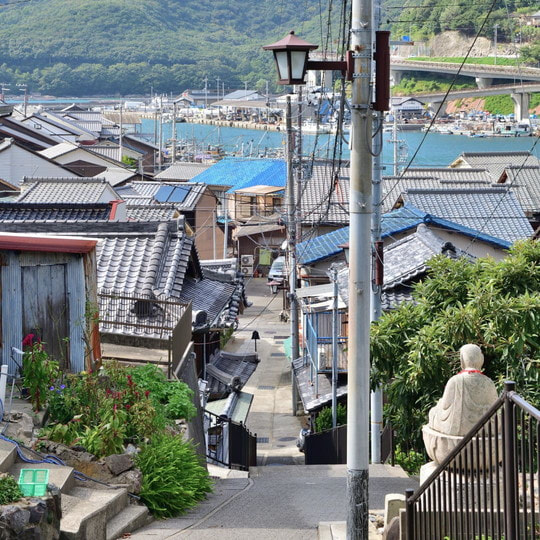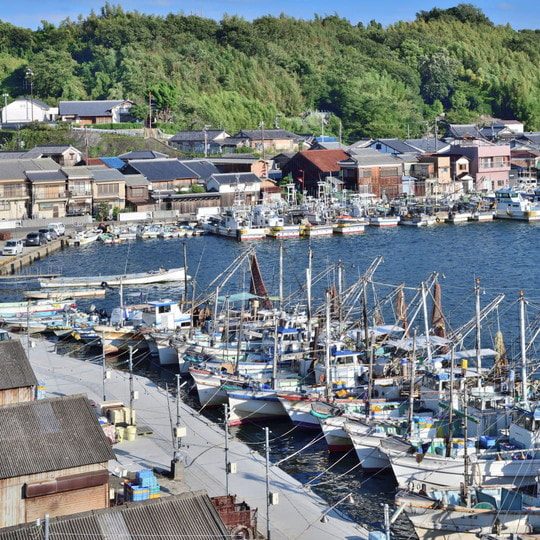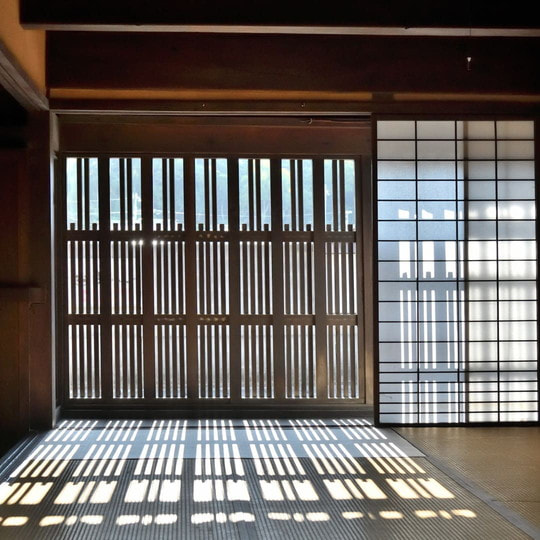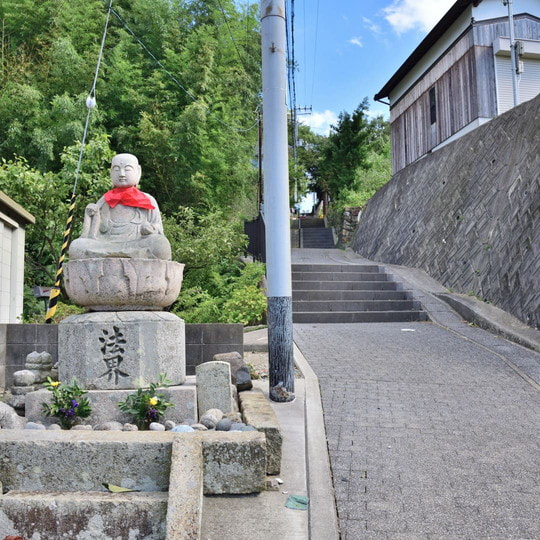Port Town with A History of 1300 Years
Murotsu district in Tatsuno City has history of 1300 years as a port town. Murotsu is praised by the great names in literature such as Ihara Saikaku (1642–1693), Junichiro Tanizaki (1886–1965), Yumeji Takehisa (1884–1934) and Ryotaro Shiba (1923-1996), as a cultrally refined town. A lot of Japanese style old wooden buildings are remained here. A stroll around the district is highly recommended. Murotsu Kaiekikan was built by a merchant who grew wealthy on the maritime shipping trade in the 19th century. It is open to public for sightseeing.
The charm of Murozu lies in the fact that it has always been a place where people live as well as a tourist spot. Fishing boats go out in the early morning and families wait for them in the evening. In the late afternoon, and such a scene from 1300 years ago exists in this town.
Murotsu Museum of Folklore used to be the property of a wealthy merchant family who were allowed to keep the family name “Toyono.” This is one of the few remaining large-sized valuable townhouses in the area, and can boast some rather unusual features, such as secret staircases, that cannot be seen in other townhouses. The upstairs windows are also quite interesting, as they are covered by distinctive bars, which are somewhat unusual, especially in Murotsu. In 1988, it was designated as a Hyogo Prefecture Cultural Property, as the museum introduces Murotsu as a port town, exhibiting a variety of resources on the history and folklore of the area.
Murotsu Museum of Sea Port used to be the property of the successful cargo-vessel wholesaler, Shimaya, during the Edo period. It has two stories with a tiled gable roof, in the typical townhouse style of Murotsu. It has been designated a Tatsuno City Cultural Property due to its beautiful interior design, and is one of the few remaining large-sized valuable townhouses in the area, along with Uo-ya (the present-day Murotsu Museum of Folklore). It also introduces the history of Murotsu as a post town by the sea, focusing on four themes, and has a cafe and a shop inside the museum to add to the overall visitor experience.
The charm of Murozu lies in the fact that it has always been a place where people live as well as a tourist spot. Fishing boats go out in the early morning and families wait for them in the evening. In the late afternoon, and such a scene from 1300 years ago exists in this town.
Murotsu Museum of Folklore used to be the property of a wealthy merchant family who were allowed to keep the family name “Toyono.” This is one of the few remaining large-sized valuable townhouses in the area, and can boast some rather unusual features, such as secret staircases, that cannot be seen in other townhouses. The upstairs windows are also quite interesting, as they are covered by distinctive bars, which are somewhat unusual, especially in Murotsu. In 1988, it was designated as a Hyogo Prefecture Cultural Property, as the museum introduces Murotsu as a port town, exhibiting a variety of resources on the history and folklore of the area.
Murotsu Museum of Sea Port used to be the property of the successful cargo-vessel wholesaler, Shimaya, during the Edo period. It has two stories with a tiled gable roof, in the typical townhouse style of Murotsu. It has been designated a Tatsuno City Cultural Property due to its beautiful interior design, and is one of the few remaining large-sized valuable townhouses in the area, along with Uo-ya (the present-day Murotsu Museum of Folklore). It also introduces the history of Murotsu as a post town by the sea, focusing on four themes, and has a cafe and a shop inside the museum to add to the overall visitor experience.

